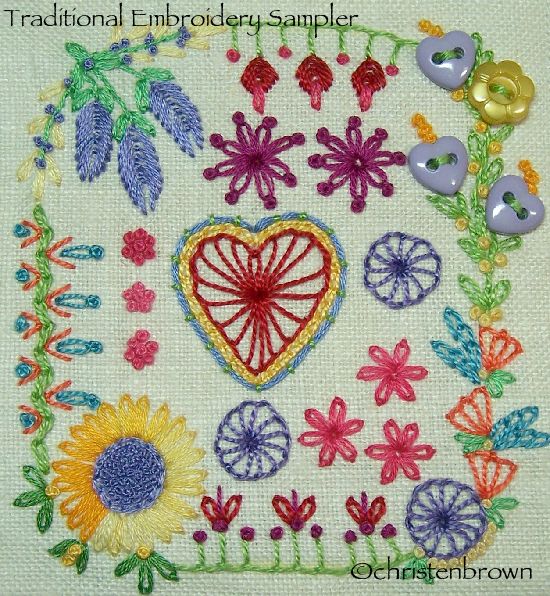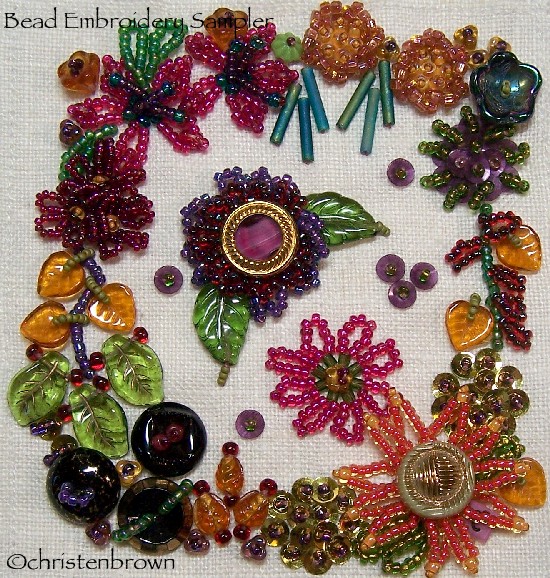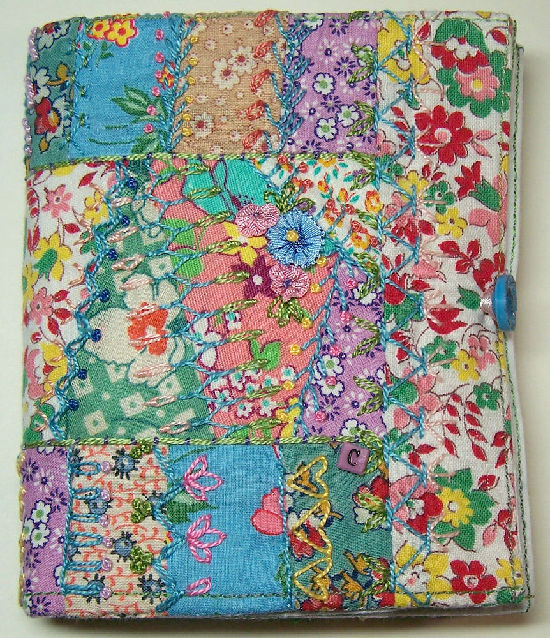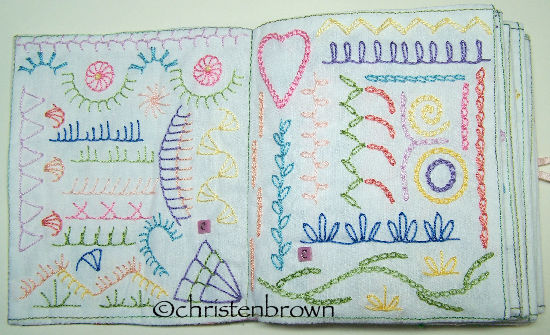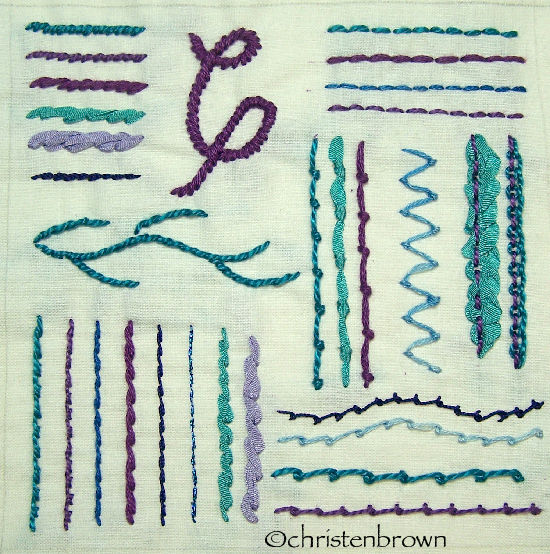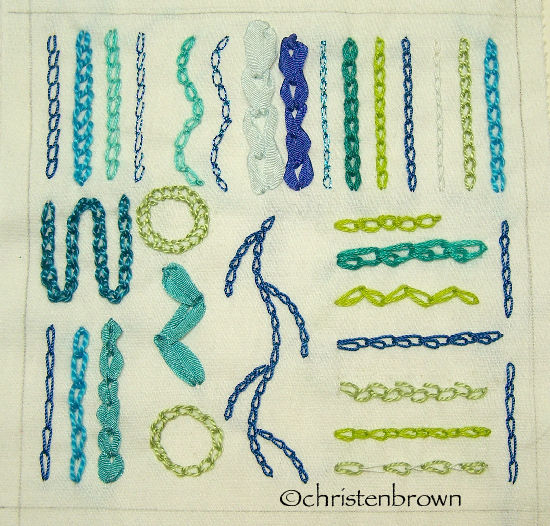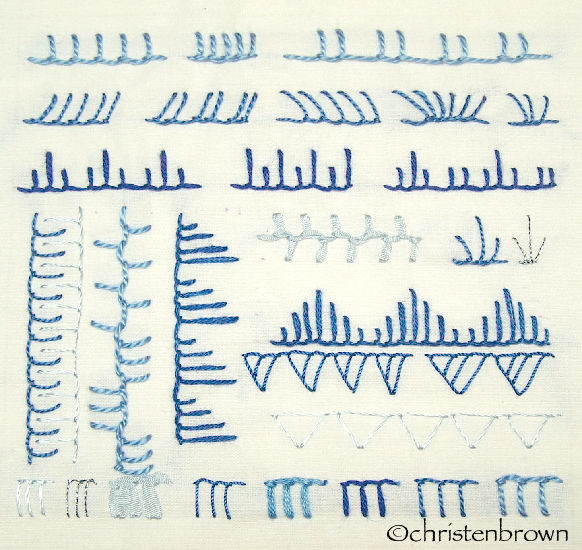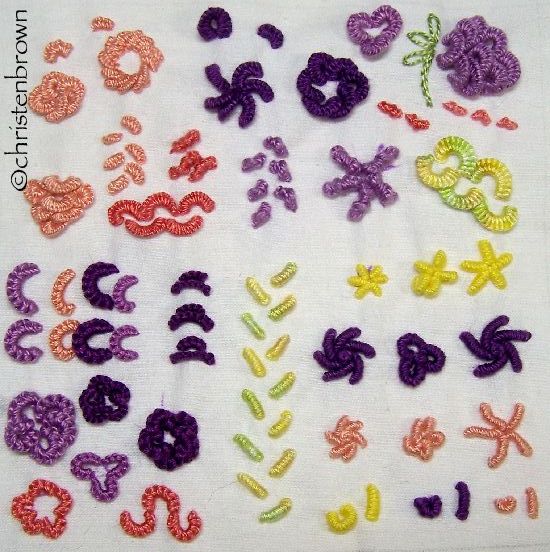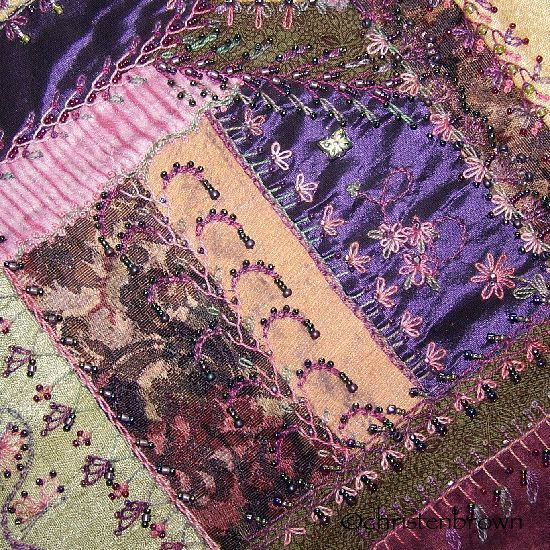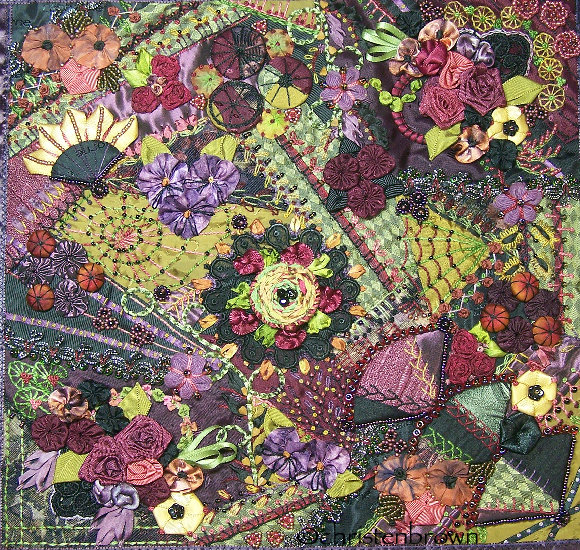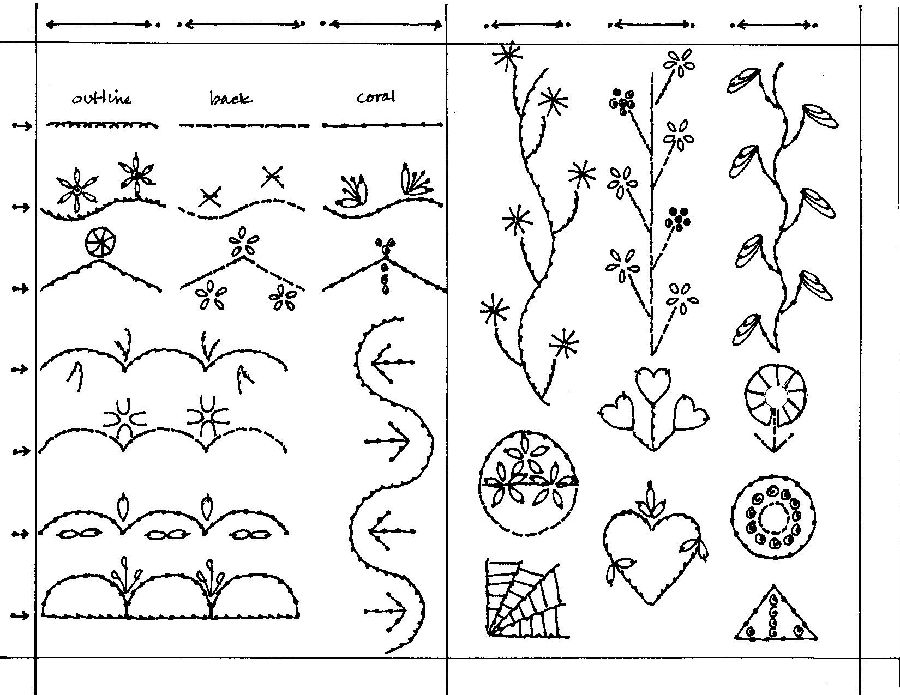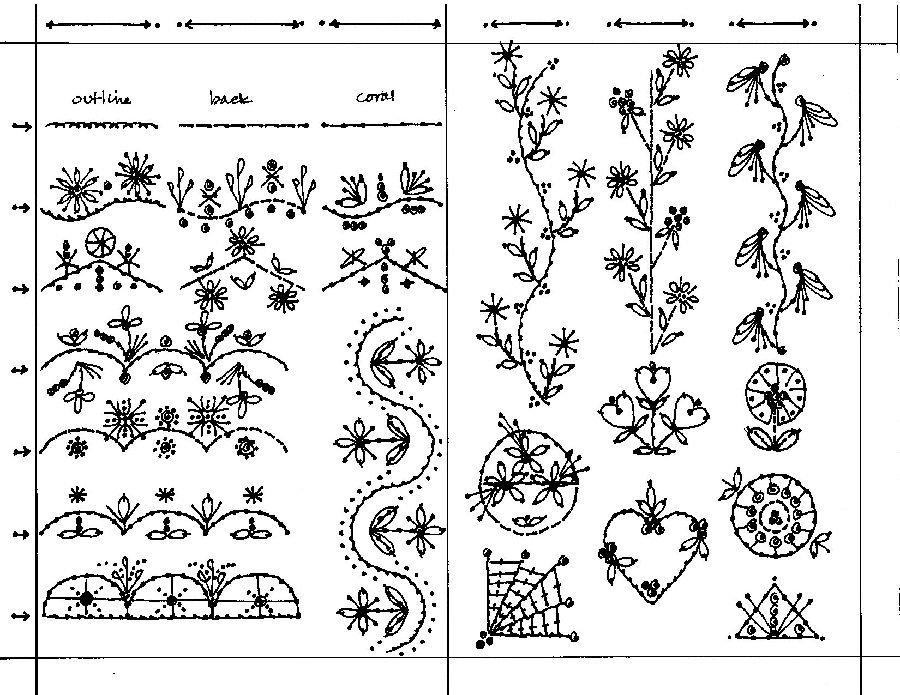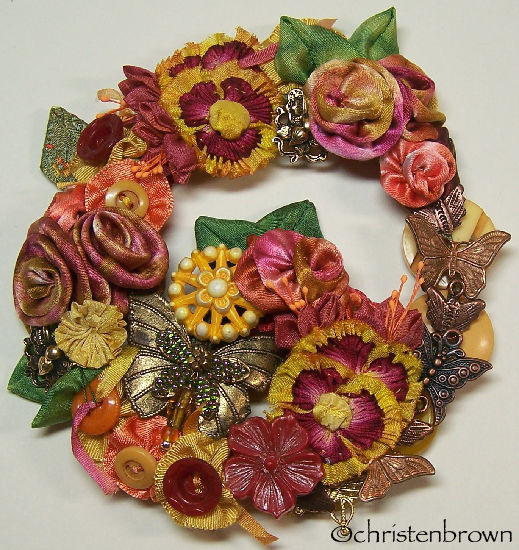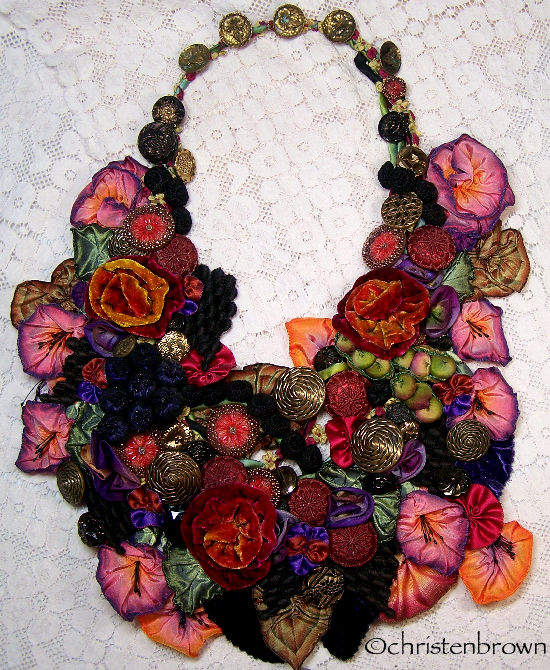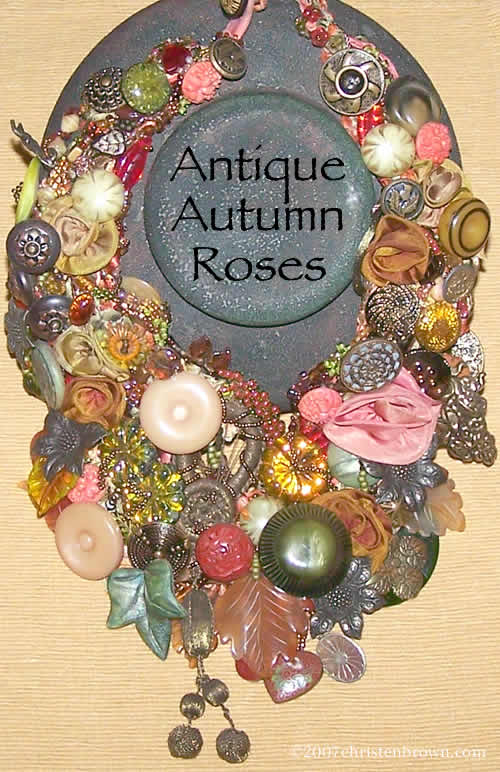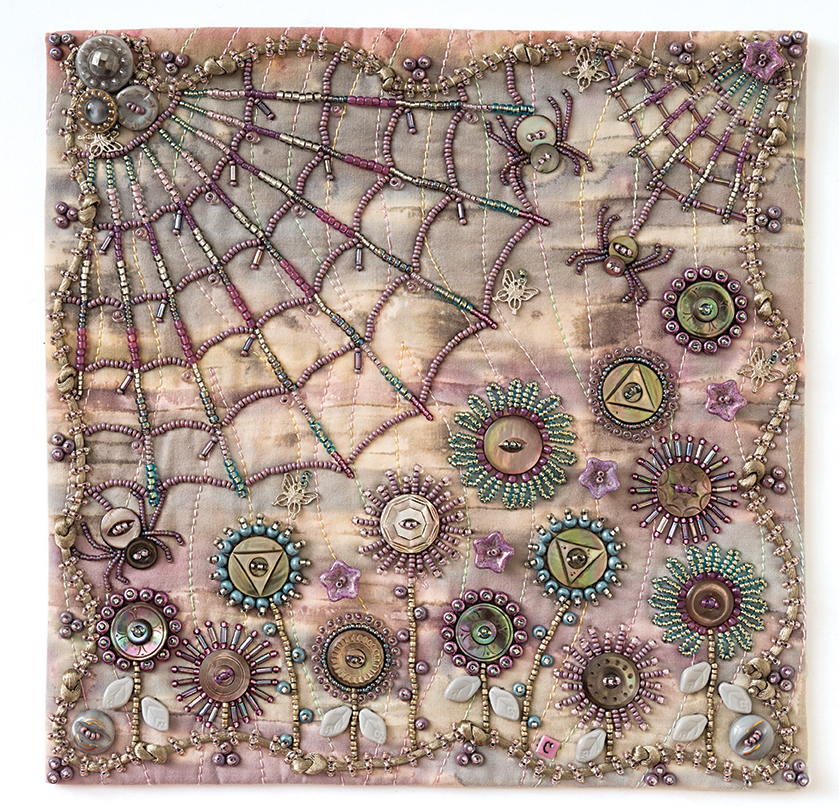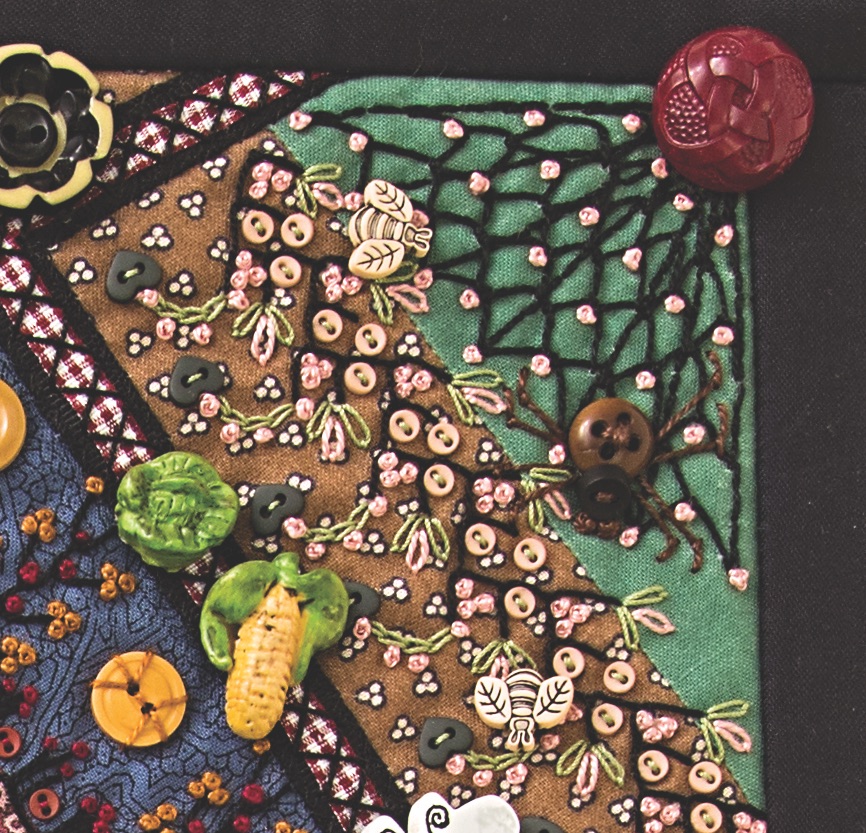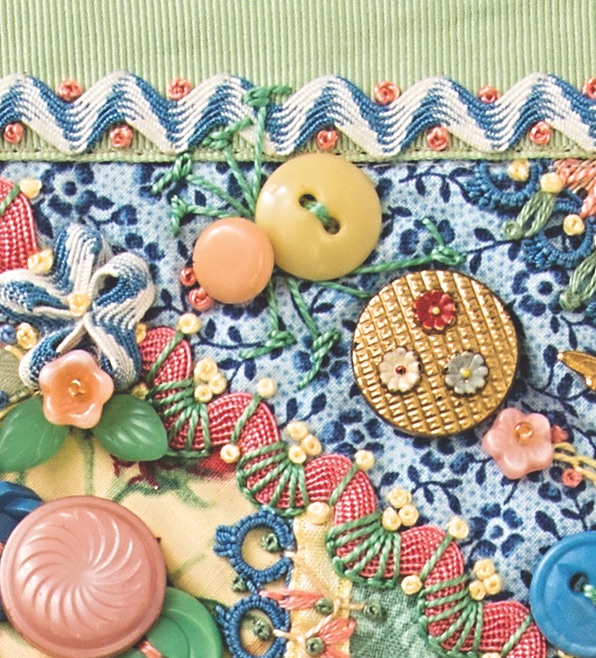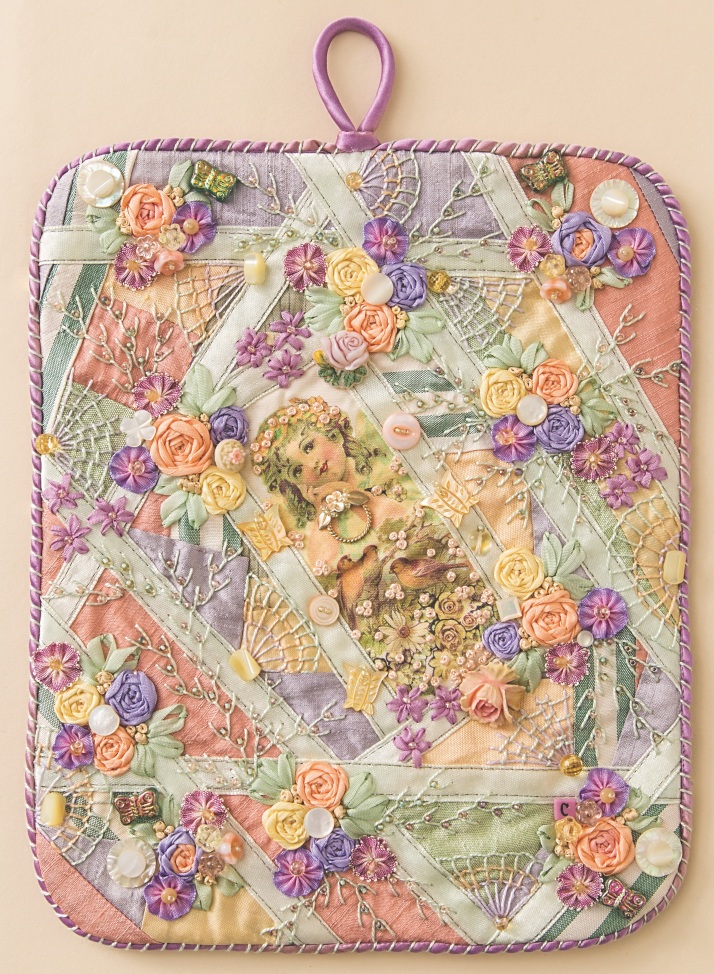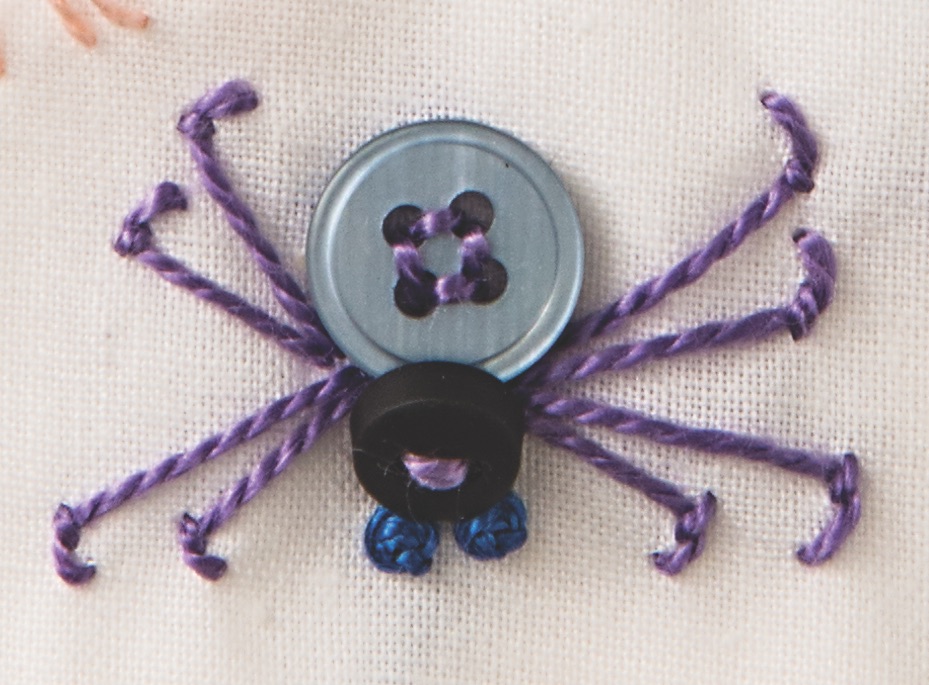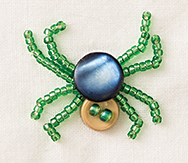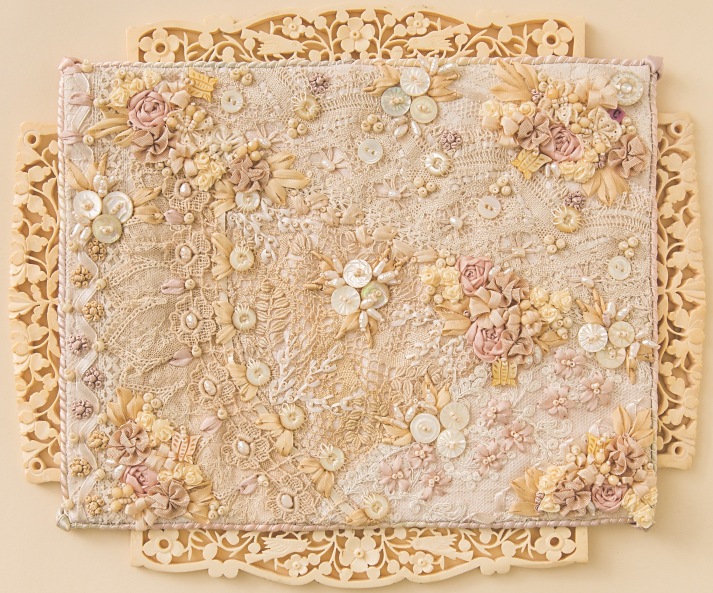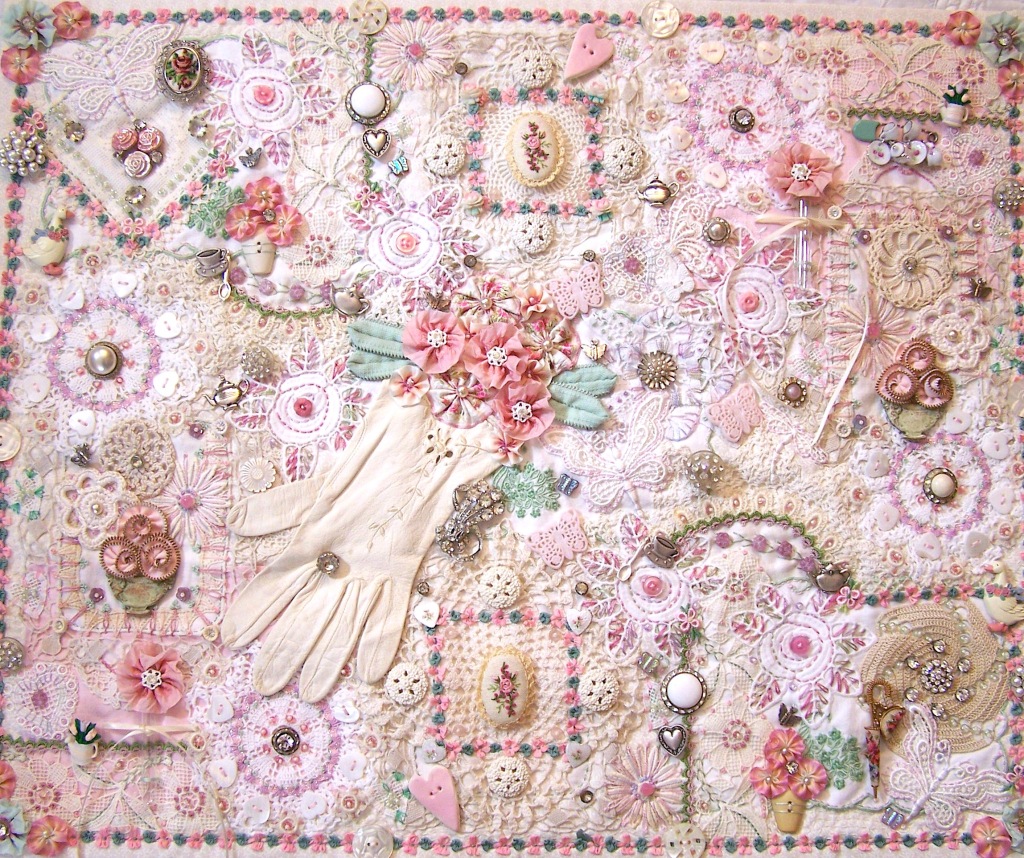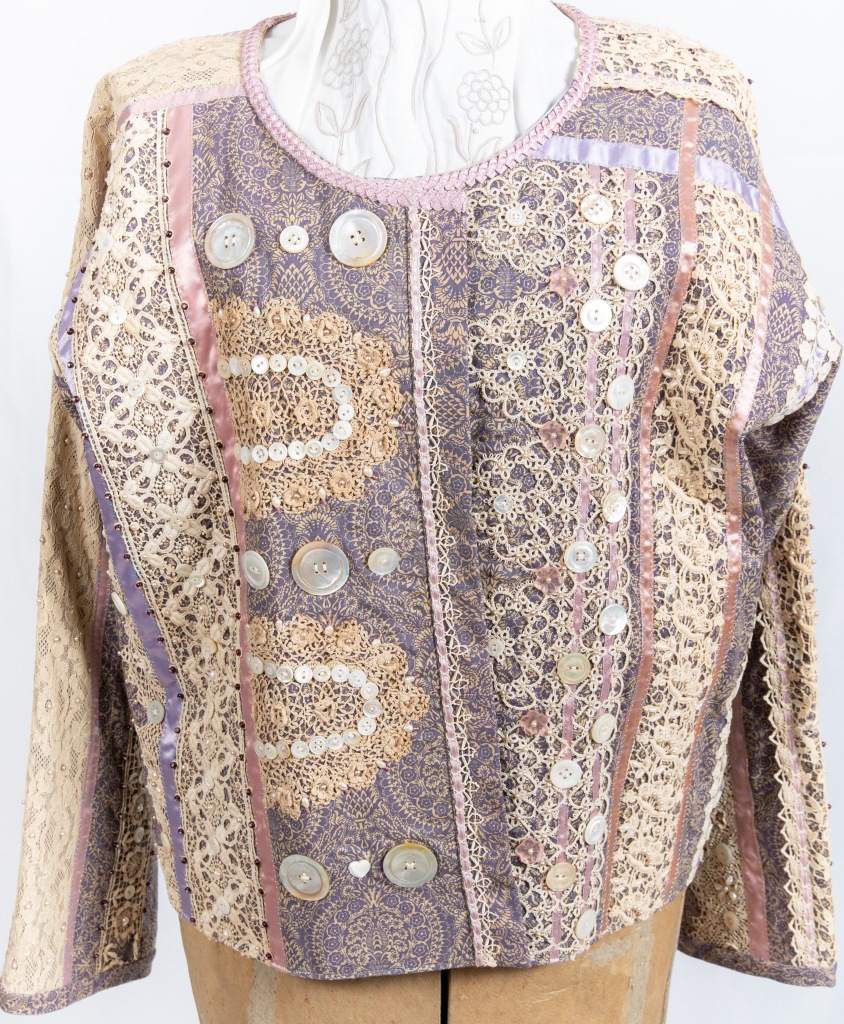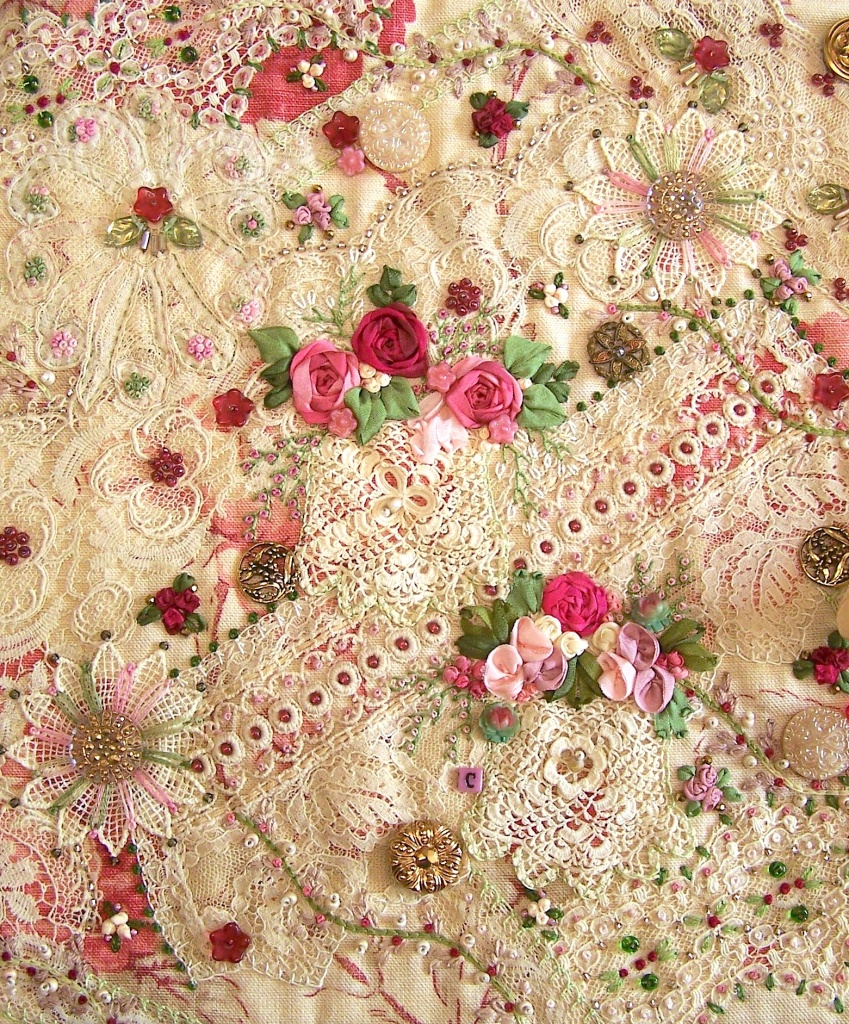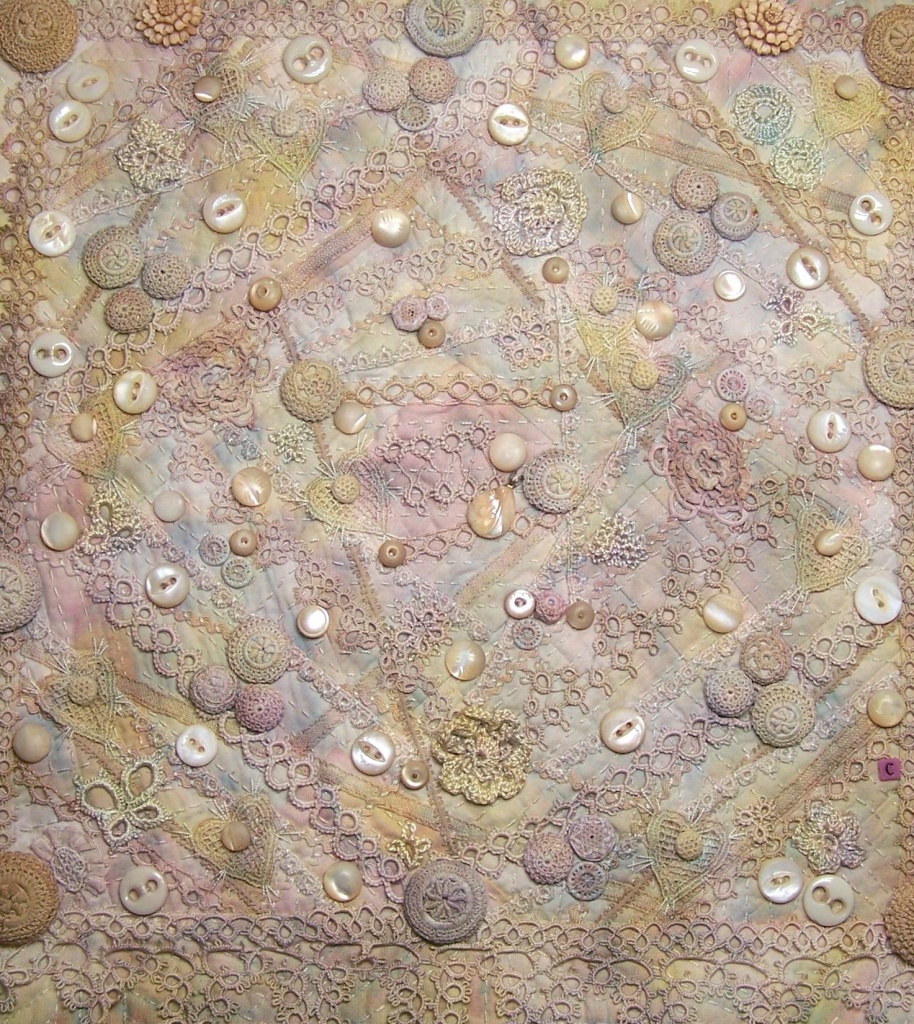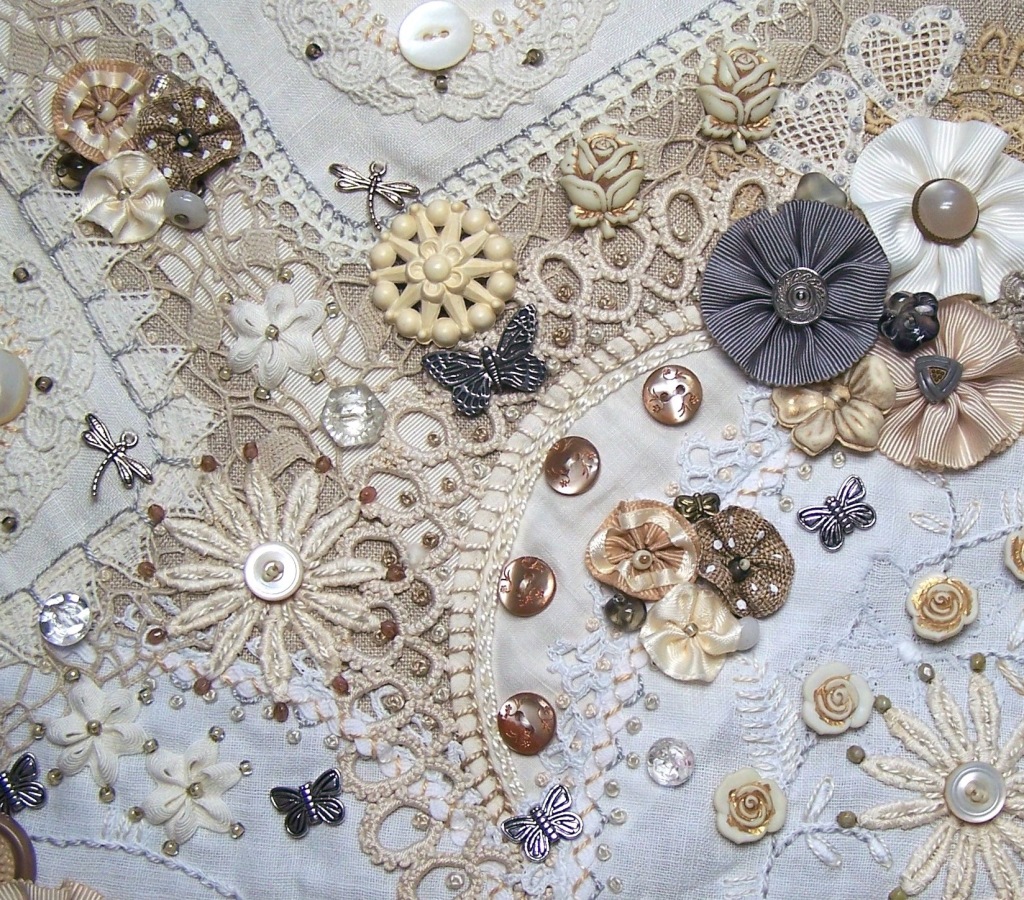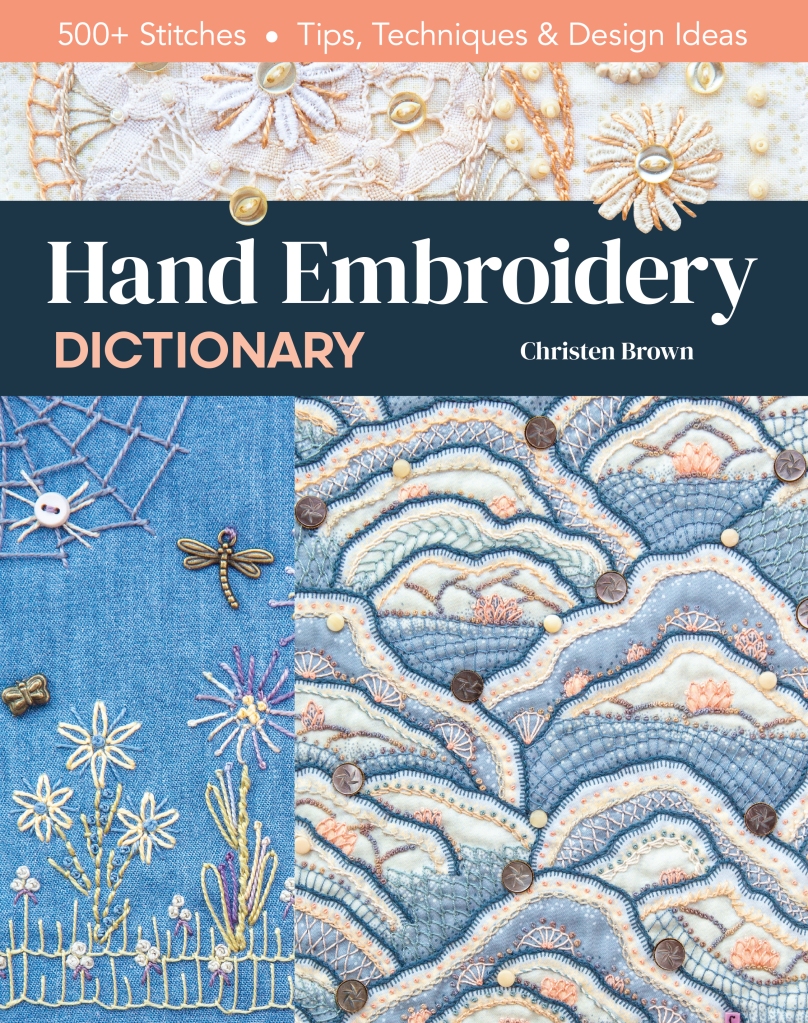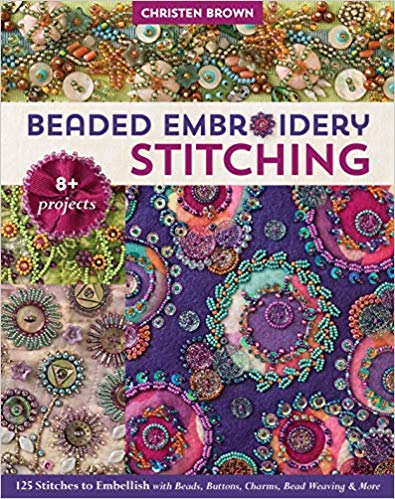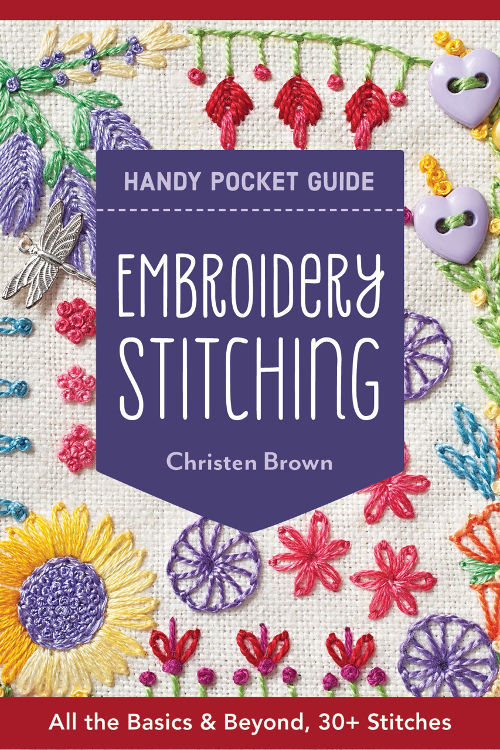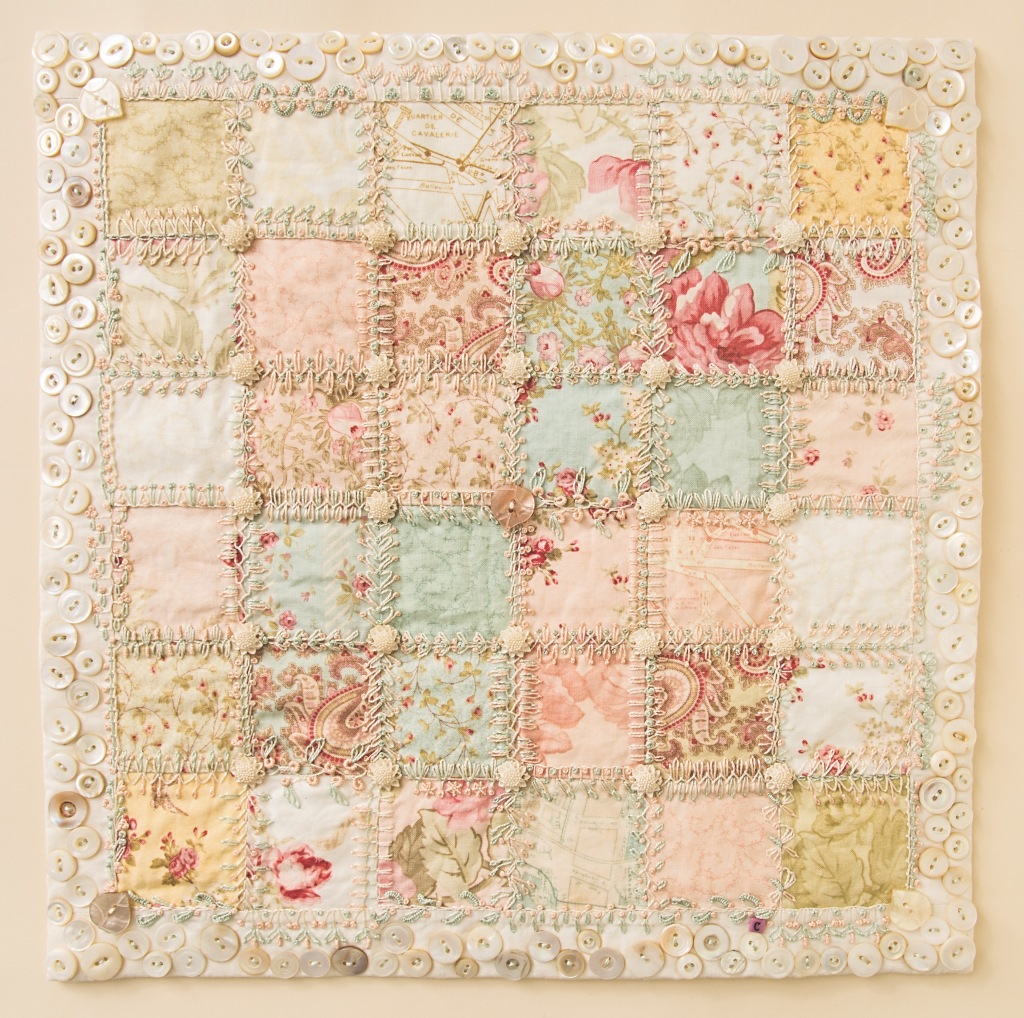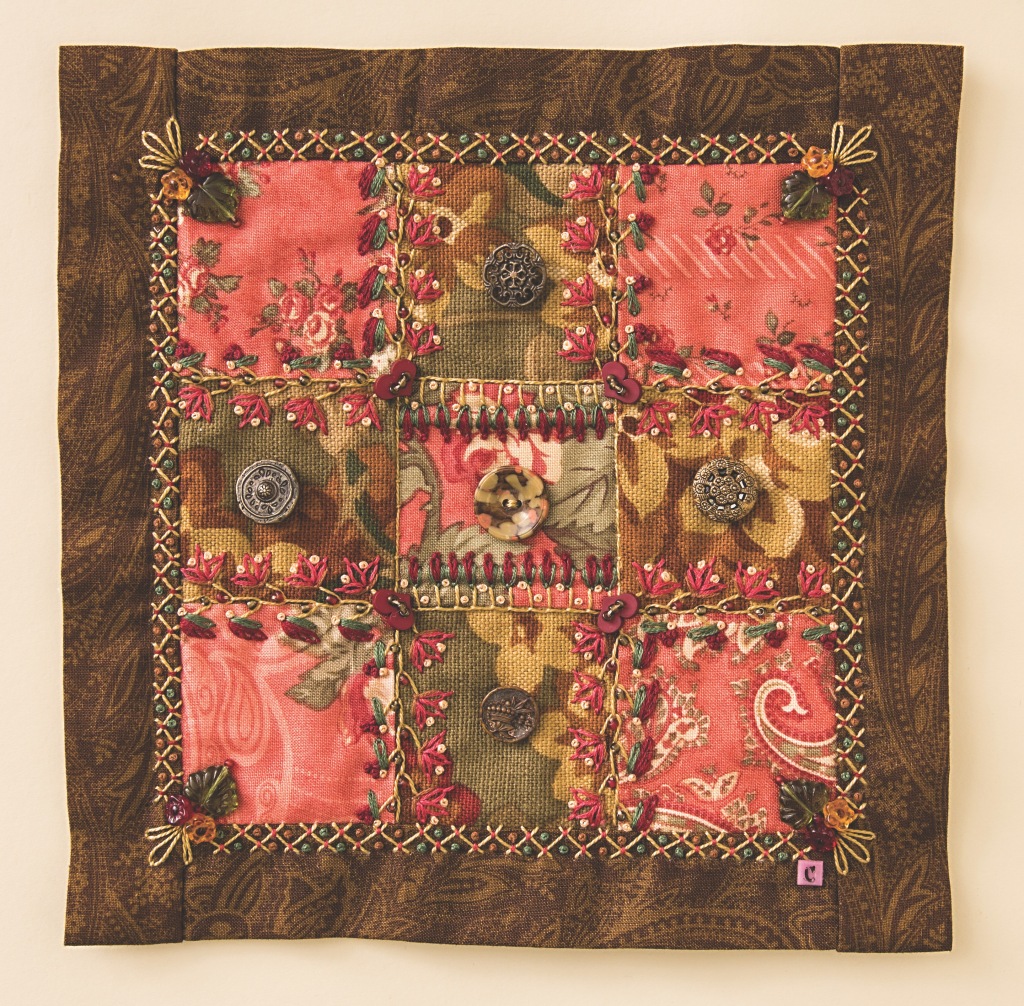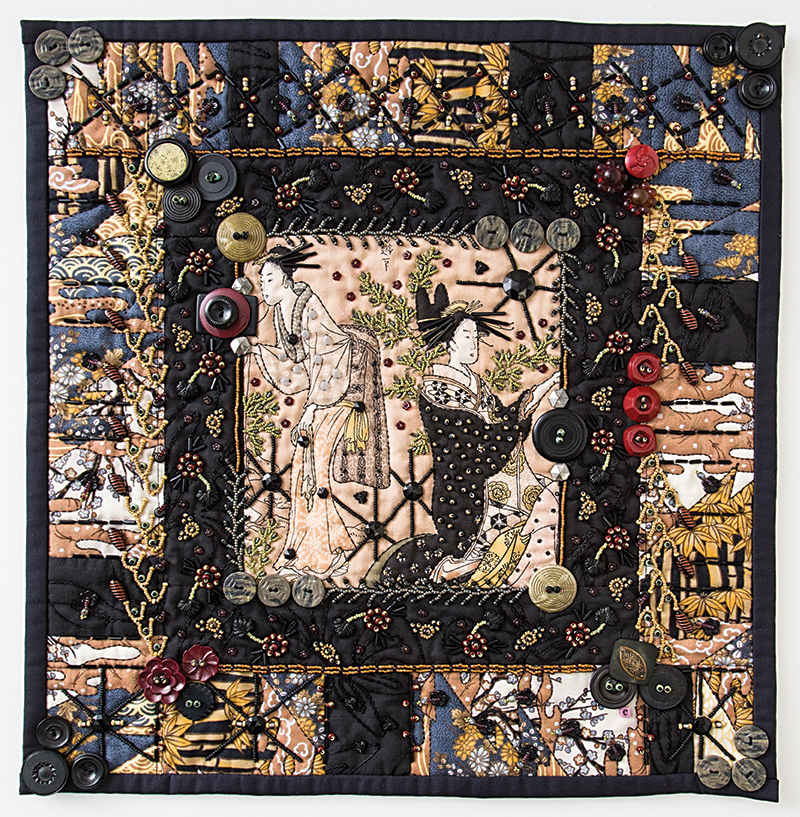I love to embroider, which I am sure you can tell. I have two books that are specifically focused on embroidery. In the Hand Embroidery Dictionary there are over 500+ stitches, both traditional stitches and unique stitches that I developed for the book. In my book Beaded Embroidery Stitching, I offer you both traditional bead embroidery stitches as well as unique techniques that accommodate the special characteristics of the different bead shapes and sizes.
Below, I show you how various forms of thread embroidery can be adapted to bead embroidery and bead woven stitches. The use of beads in the bead embroidery and bead woven stitches certainly do bring a surprisingly visual and dimensional aspect to the work.


Here is an example of two crazy pieced sections of fabric. The first is worked in traditional thread and silk ribbon embroidery stitches, along with embellishments such as tatting, rosettes, charms and buttons. In the second piece, you see traditional stitches translated into beaded embroidery, with the stitches worked in seed beads in sizes 6°, 8°, 11°, and 15°. Embellishments include lace, larger beads, charms, and buttons.
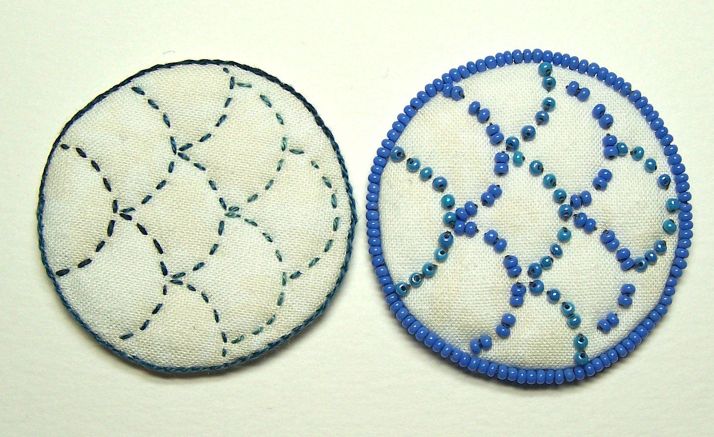
This is an example of a sashiko pattern, the first is embroidered with perle cotton; the second is embroidered with 11° seed beads.

Here is an example of the cross stitch worked in perle cotton, and size 11° seed beads.

Here is an example of two brooches, worked in similar design. In the first I embroidered the Brazilian rose, and traditional leaves and French knot stitches in perle cotton; with a couched cord frame. In the second, I embroidered the a rose with size 11° seed beads, and added in bead woven leaves, and charms; with a beaded couched cord frame.
Happy Stitching to you! ~Christen
PS: If you are looking for inspiration or ideas, check out my PDF Classes and books.
